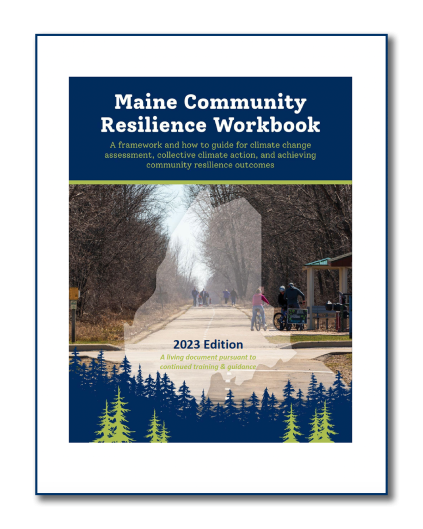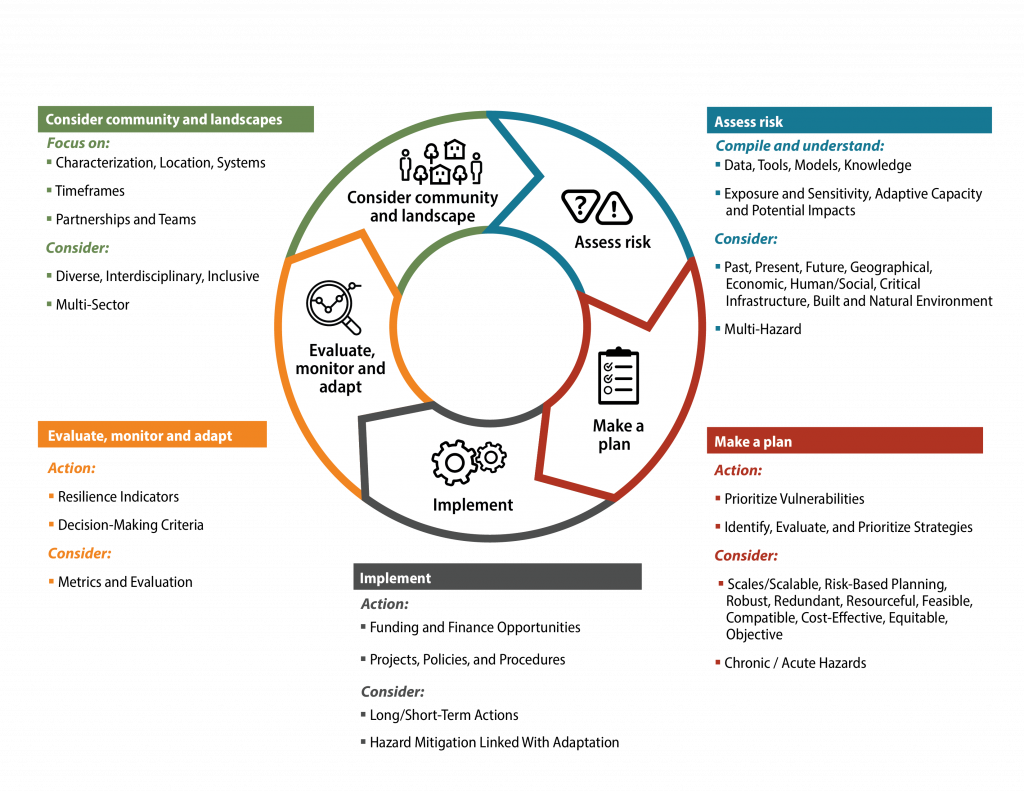Welcome to the CCAP Website for Community Climate Resilience!
Throughout this site, we’ve compiled the best information and best practices to assist communities in building local climate resilience.
Adapting to Climate Change
Communities across Maine are already adapting to climate change. We are collectively learning how to respond to changing and intensifying storm patterns, more extreme precipitation events, stronger wind, and summer droughts. Towns and homeowners are already preparing for sea level rise, upgrading roads, adapting structures, and making plans and operational changes to keep people safe, keep communities vibrant, and to build resilience into everyday actions.
Why adapt to a changing climate in Maine?
- Protect the people, places, and environments that we care for.
- Save money for communities and individuals by avoiding chronic repairs and damage.
- Preserve our communities’ way of life.
Resilience Building Cycle
This Resilience Building Cycle provides a framework for aligning community actions so that a more directed approach to resilience can be charted. Resilience building is a continual cycle of various steps from taking stock and visioning at a high level to assessing, planning, and implementing projects. Progress is often non-linear and work can be accomplished at points along the cycle at all times. Each proposal, project, or plan is an opportunity to ask how climate change can be integrated so there is incremental or larger resilience-building progress. When adapting systems and infrastructure, you can draw from the strengths of your town and the skills of local leaders. You can look to neighboring communities to learn about their climate-resilience initiatives. The process requires learning from the work and from peers to constantly improve. The Climate Adaptation Providers Network has compiled a starting list of decision support tools, case studies of best practices, and training and networking opportunities, from Maine and beyond that communities are using and can support your work in each part of the Resilience Building Cycle.


